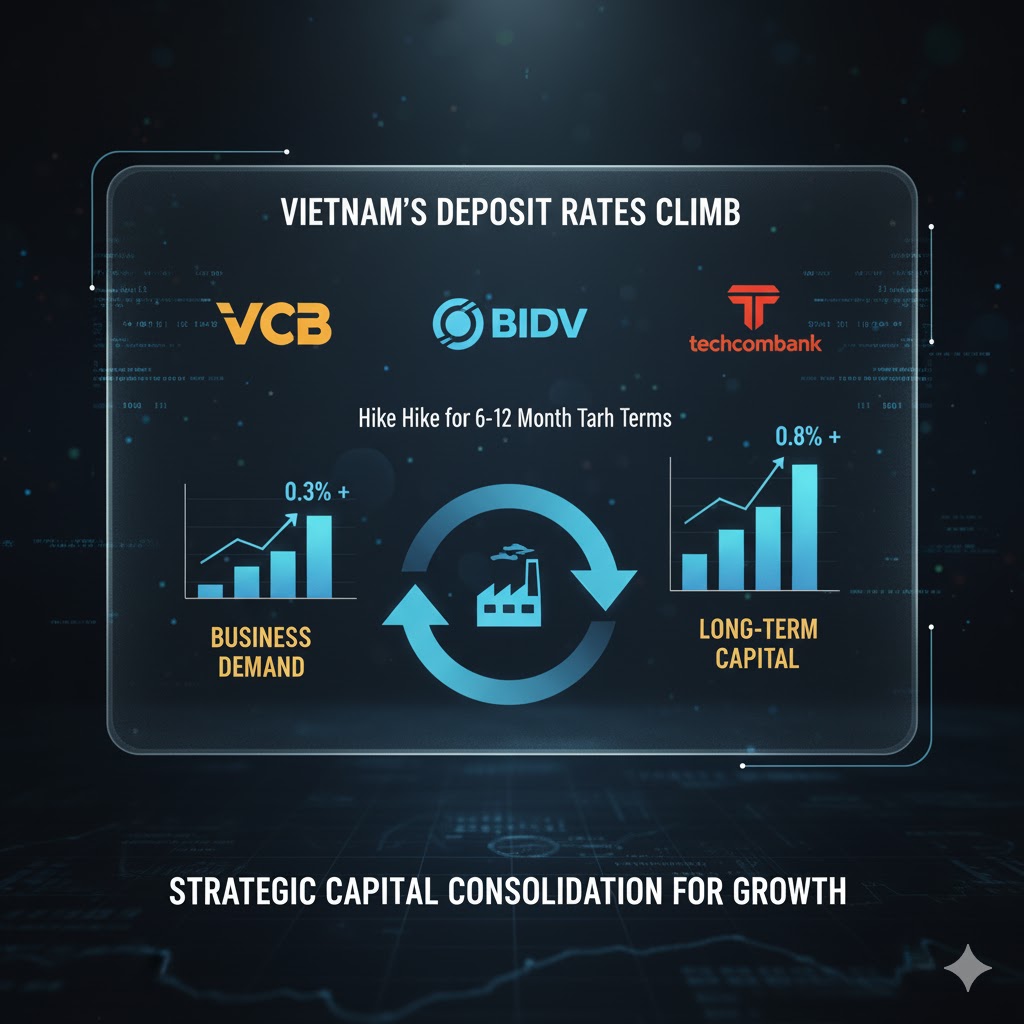
It is impossible to miss important market information according to the event stream
Contrary to the global easing trend, Vietnam’s central bank and major lenders have raised deposit rates to defend domestic liquidity and stabilize the currency. The move reflects not tightening, but the beginning of a structural shift in capital allocation.
HANOI – As the U.S. Federal Reserve (Fed) entered a rate-cut cycle in November 2025, global markets turned toward monetary easing. Yet Vietnam’s policy trajectory diverged.
Major commercial banks have raised deposit rates, signaling the emergence of a “reverse rate phenomenon” within the domestic financial system.
Index
Since the second half of 2024, leading Vietnamese banks have increased deposit rates for 6–12 month terms by an average of 0.3 to 0.8 percentage points — a clear contrast to the Fed’s direction.
Experts cite several key drivers:
Particularly in Hanoi and Ho Chi Minh City, the resumption of infrastructure and construction projects has driven banks to strengthen medium-term funding through short-term deposit inflows.

While the Fed’s easing signals a weaker dollar and improved capital inflows, it also poses new challenges for emerging markets.
The State Bank of Vietnam (SBV) prioritizes exchange-rate stability.
As the USD weakens, the Vietnamese đồng (VND) could appreciate excessively, undermining export competitiveness.
To mitigate this, SBV has opted for a modest increase in deposit rates to retain domestic liquidity and ease short-term forex volatility.
Market analysts agree that this is not the start of a tightening phase but rather a technical rebalancing of domestic capital flows.
In the short run, it absorbs liquidity and consolidates the banking system.
In the longer term, it lays the groundwork for more sustainable investment flows and reinforces macro stability as Vietnam’s infrastructure spending accelerates.

“Vietnam’s rate strategy is not reactive but strategic.
By fine-tuning deposit rates, the central bank seeks to preserve monetary stability and market confidence.”
— Dr. Nguyen Tuan Anh, Hanoi Institute for Financial Studies
Vietnam’s “reverse rate” move amid the Fed’s easing phase points to a capital realignment toward domestic resilience.
In the near term, maintaining higher liquidity and cash holdings remains prudent.
But over the medium term, as infrastructure projects progress and asset markets normalize, real-asset investment (particularly property) could regain momentum.
This rate increase should not be seen as a burden, but as a recalibration period — a phase of rebuilding the market’s underlying strength.




Thành tiền